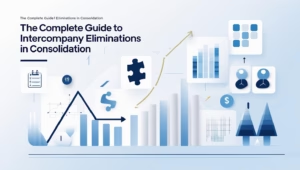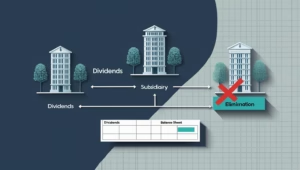Accounting
-

What is Quasi-Equity?
—
in AccountingQuasi-equity is a type of financing that sits between debt and equity. It behaves partly like a loan and partly like an equity investment, giving funders repayment rights but also…
-

Mastering Intercompany Dividend Elimination: A Comprehensive Guide for CFOs and Finance Teams
—
Introduction Dividends are among the most common intercompany transactions in group structures. They are also one of the trickiest to manage in consolidation. While dividends represent cash returns to shareholders…
-

A Step-by-Step Guide to Building a Consolidated Cash Flow Statement
—
Introduction Cash is the lifeblood of any business—and for groups with multiple subsidiaries, knowing where cash comes from and where it goes is critical. A consolidated cash flow statement (CFS)…
-

Intercompany Transactions Elimination: Step-by-Step Accounting Process
—
In group accounting, one of the biggest challenges is ensuring that financial statements present an accurate and fair picture of the business as a whole. This means more than simply…
-

The Complete Guide to Intercompany Eliminations in Consolidation
—
When companies grow into multiple entities, transactions between those entities become inevitable. But when it comes time to prepare consolidated financial statements, these intercompany balances can distort the true financial…
-

Understanding Intercompany Dividend Elimination in Financial Consolidation
—
Why Intercompany Dividends Must Be Eliminated When consolidating financial statements across multiple entities within a group, one essential adjustment is the elimination of intercompany dividends. These are dividends paid by…
-
Why Do We Eliminate Intercompany Transactions in Financial Consolidation?
—
Seeing the Group as One When a group of companies is under common control—such as a parent company with several subsidiaries—the goal of financial consolidation is to present their financials…
-
5 Common Financial Reporting Mistakes (And How to Avoid Them)
—
in AccountingFinancial reporting is the cornerstone of effective decision-making. However, even small mistakes can lead to inaccurate insights, poor decisions, or compliance risks. Here are five common financial reporting pitfalls and…
-
The Art of Financial Storytelling: Turning Numbers into Decisions
—
in AccountingNumbers are the backbone of every business decision, but raw data alone doesn’t inspire action. To truly unlock the power of financial reporting, you need to go beyond the figures…
